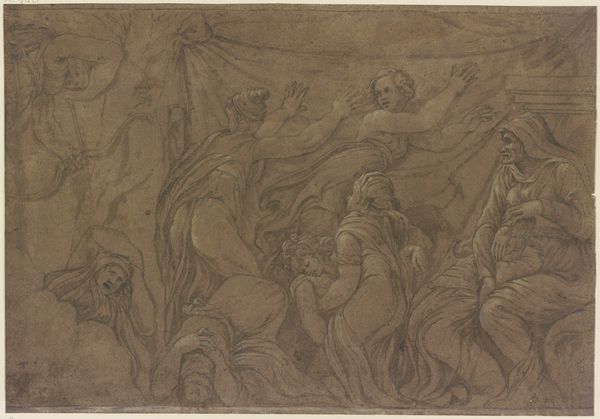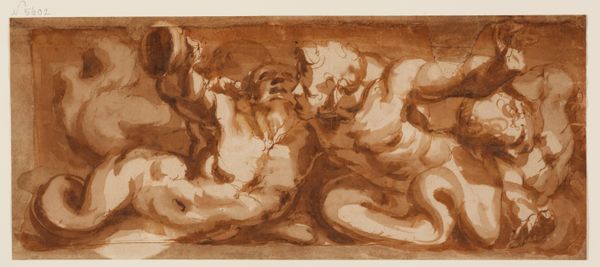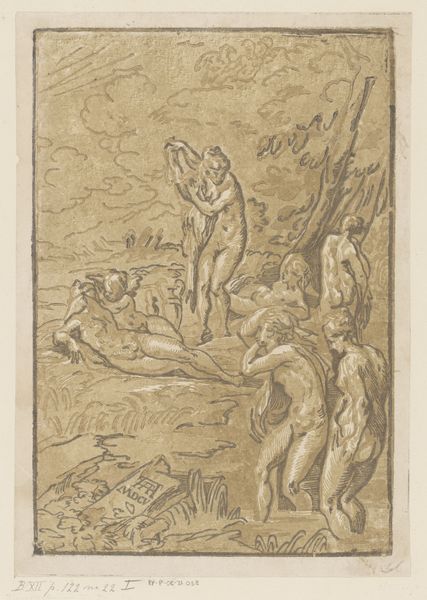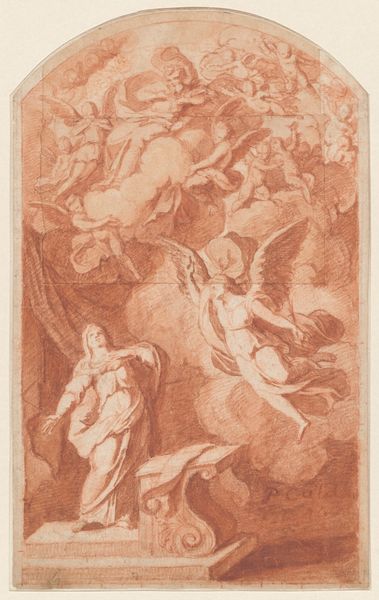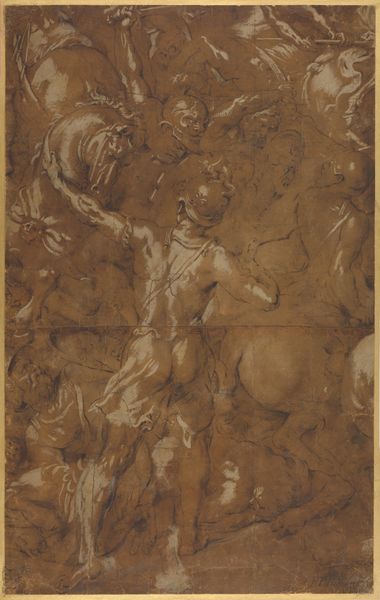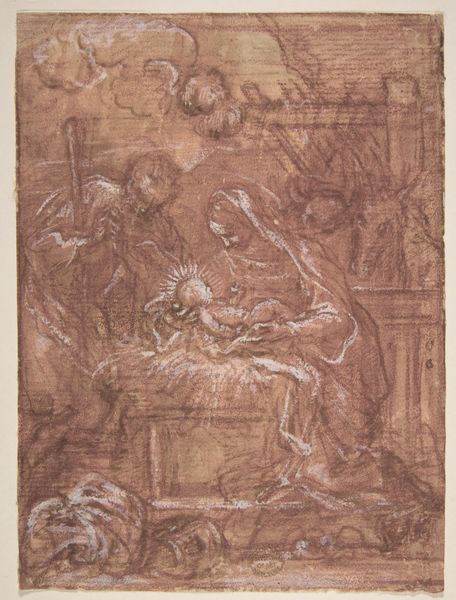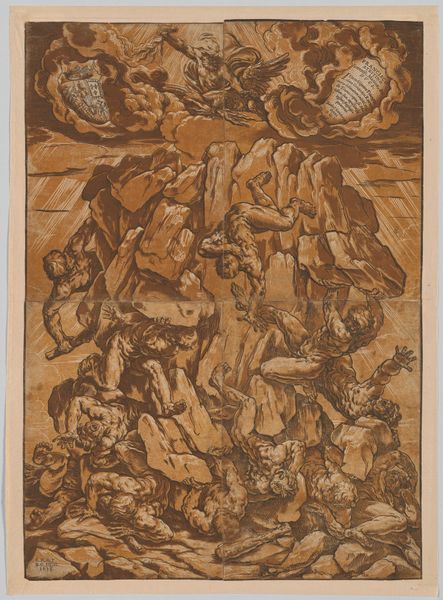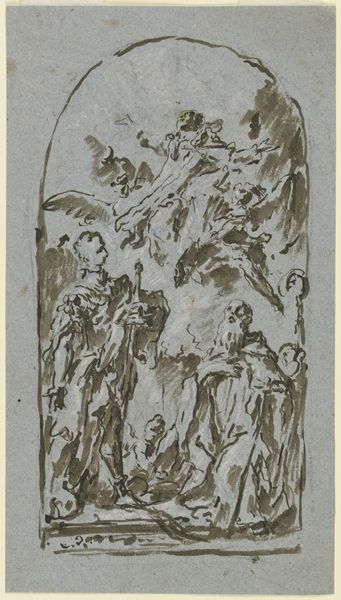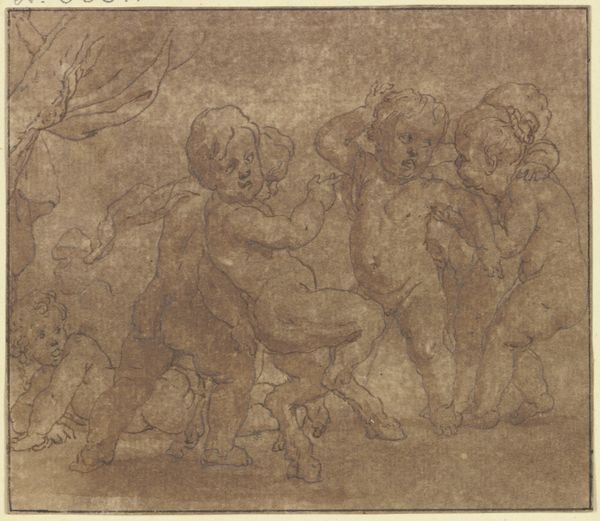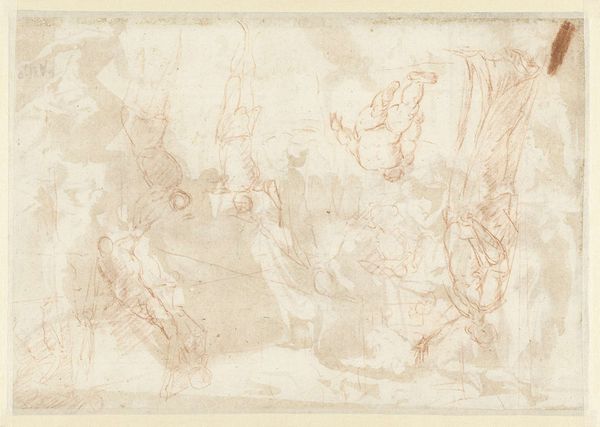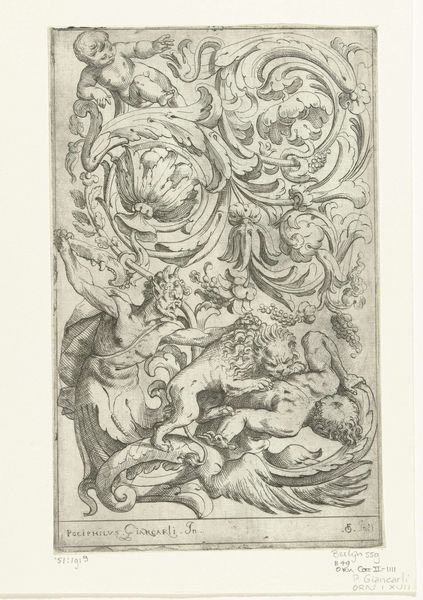
drawing, ornament, print, intaglio, engraving
#
drawing
#
ornament
#
toned paper
# print
#
intaglio
#
figuration
#
line
#
history-painting
#
italian-renaissance
#
engraving
Dimensions: 5-1/2 x 19-5/16 in. (14.0 x 49.1 cm)
Copyright: Public Domain
Curator: Before us is "Ornamental Frieze," a fascinating intaglio print made by Lelio Orsi sometime between 1511 and 1587. It resides here at the Met. What are your initial thoughts on it? Editor: The dynamism is striking. Despite the monochromatic palette, the figures seem caught in perpetual motion. It reminds me of Mannerist sensibilities, where tension and artificiality reign. Curator: Exactly! Orsi worked during a tumultuous period in Italian history, where traditional artistic conventions were being challenged. The frieze teems with swirling foliage, mythological figures, and decorative motifs. Consider how the dense composition mirrors the socio-political anxieties of the time, perhaps hinting at power struggles and instability. Editor: I'm drawn to how Orsi manipulates light and shadow to create depth. Notice how the use of engraving enhances the sinuous lines and ornate details. Curator: Absolutely, the formal qualities emphasize the narrative. Given that Renaissance society was highly patriarchal, I also read it in relation to questions of masculinity. The hyper-muscular figures and battle scenes can be examined to see how the role of the powerful masculine was shaped during that time. The blank roundel is intriguing; what do you make of it? Editor: Functionally, it is an area that remains unused but calls attention to itself as the central visual focus. It gives the frieze structural balance but adds a sense of incompleteness or anticipation, inviting the viewer to engage actively. Curator: Indeed. And thinking about viewers, while we perceive it as a work of art, the function of this frieze may have been as a study for frescos, or even tapestries, so perhaps the incomplete element was designed to be filled in later. Editor: Considering all the figures contained, it is striking that they seem more about conveying a message than expressing the individualistic emotions which characterized Renaissance portraits. Curator: Yes. These representations contributed to a complex dialogue about identity and purpose during a period of transformation in Europe. Editor: Looking closer, it offers an intricate balance of visual structure. The artwork delivers, simultaneously, controlled restraint and unrestrained motion. Curator: Considering the fusion of form and historical context reveals so many layers of meaning that resonate to the modern era. Thank you. Editor: An intriguing interplay. Analyzing it provides another perspective from which to appreciate the artwork.
Comments
No comments
Be the first to comment and join the conversation on the ultimate creative platform.
